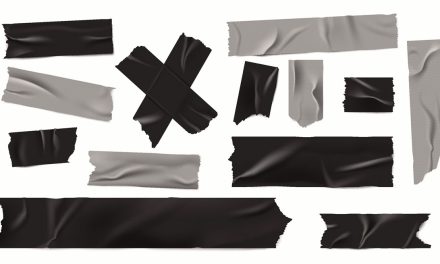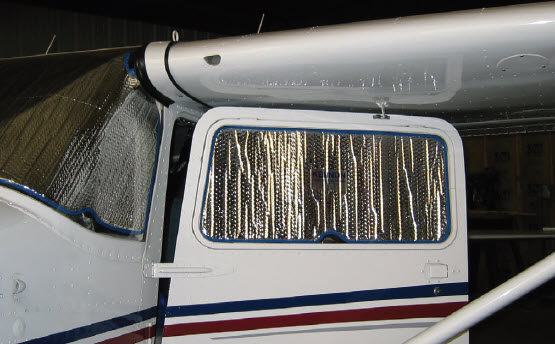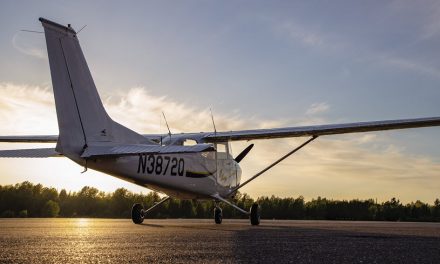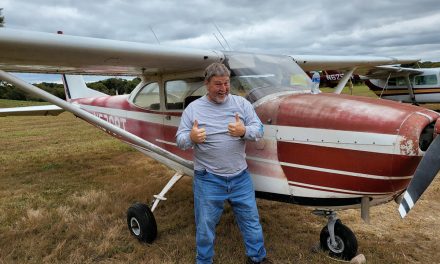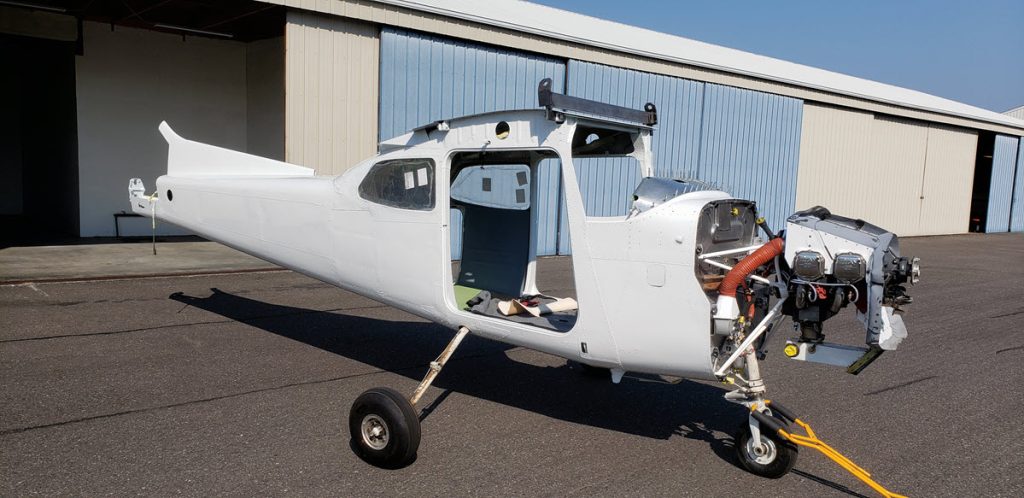
This article about the restoration of Steve Compton’s 172 started in the July 2022 issue with a look at the plane’s disassembly and painting. In August, we detailed the panel’s makeover. This month we finish with the interior upgrades and reassembly.
While most of Steve Compton’s investment in the soon-to-be his 1974 Cessna 172M was in the avionics package that we talked about last month, the bulk of the work of this restoration remained in putting the airplane back together. The problem with aircraft of this vintage is that if all the parts are original, they will usually work just fine as long as you never touch them. With this project, everything had been touched at least once, maybe twice. This meant that a lot of things that came off the airplane weren’t necessarily fit to go back on.
In the summer of 2021, as reassembly of N1965V was in full swing, Compton dealt with a lot of phone calls from the small army that worked on the reassembly, asking if he wanted to spend just a few more dollars to get this or that new part installed on the plane. Of course, as with all restoration projects, the budget was looming near its maximum, but there was always room for those items that would add safety to the airplane, especially with a reduced labor rate. Everything had to be reinstalled anyway, so adding something new would be better in the long run than throwing on the old thing that may have to be replaced again someday, anyway.
The biggest unexpected expense, and largest amount of additional labor involved, was the decision to add new control cables and pulleys. For the paint job, the control surfaces and wings had been removed for easy transport. Once the plane arrived back at the airport for reassembly, it was the perfect opportunity to change out all the old pulleys and cables for new ones, available in a kit from McFarlane Aviation. Since all the control surfaces would have to be reconnected and rerigged, it made sense to connect them to new cables so Steve wouldn’t have to worry about cables or pulleys failing in the near future.
During the final stages of reassembly, the airplane underwent its most drastic transformation. As soon as the purchase agreement was signed, Steve began searching for a way to give the airplane a lease on life with a new identity. “Mary [Steve’s wife] and I had just made a major move,” Steve said. “We spent our entire lives in the Greater Seattle area, but we wanted to get out of the gray and dampness of the Pacific Northwest. We moved from Sammamish, a suburb east of Seattle, over to Kennewick in the southeastern part of Washington.”
For Steve, the change in location also brought a change in area code. “We were living in the ‘425’ but moved to the ‘509’. I suggested we really make this plane our own and change the N number. We looked at the available combinations on the FAA Registry website and came up with ‘Steve and Mary moved to the 509’ so N509SM was reserved.”
With that, N1965V was now N509SM, and from here on out that’s how it will be referred to.
The rest of this article can be seen only by paid members who are logged in.Have a website login already? Log in and start reading now.
Never created a website login before? Find your Customer Number (it’s on your mailing label) and register here.
JOIN HERE
Still have questions? Contact us here.

